This post may contain affiliate links. Please read my privacy policy.
Indian chicken curry is a flavorful dish with tender chicken cooked in a sauce full of aromatic spices. Whether you're a seasoned chef or a novice in the kitchen, this recipe simplifies Indian cooking for everyone.
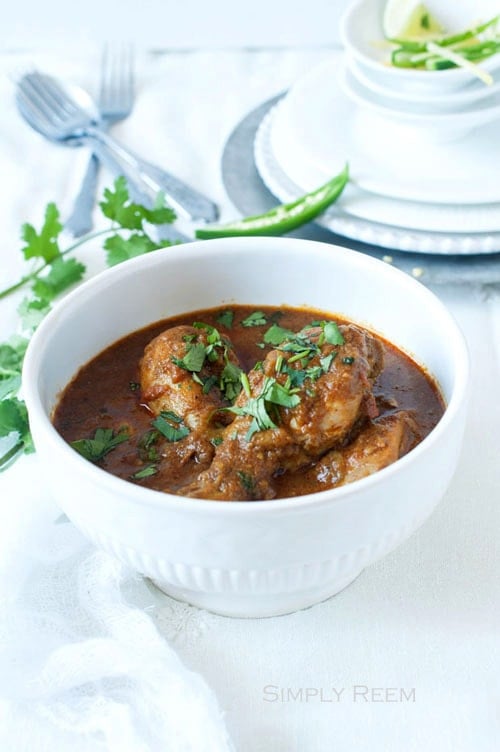
Authentic Indian Chicken Curry Recipe
Indian chicken curry is a flavorful and aromatic dish that varies greatly in taste, style, and ingredients across the diverse regions of India. Each region in India boasts its own unique variation of chicken curry, offering a diverse array of textures and tastes.
From the fiery red hues of the robust chicken vindaloo from Goa to the creamy richness of the butter chicken from Punjab, Indian chicken curry reflects the cultural diversity and culinary heritage of the subcontinent.
Whether enjoyed with fluffy basmati rice, buttery naan bread, chapati, or crispy papadums, it is a timeless classic that continues to captivate food lovers around the world with its irresistible flavors.
What Is Considered A Curry
The term “curry” is often misunderstood; it simply denotes a dish with sauce. For instance, Chicken Curry, Mixed Vegetable Curry, Lamb Curry or Squid Curry. Authentic Indian curry is not as simple as adding store-bought curry powder; it’s a harmonious blend of flavors and spices.
True Indian curries are not only delicious but also healthy, unlike the heavily spiced and fatty versions often served in restaurants. They gently simmer, allowing herbs, spices, and proteins (meat, chicken, fish, or vegetables) to meld into delightful dishes that enhance any meal.
Ingredients
The primary ingredients of Indian chicken curry include chicken pieces (usually bone-in for added flavor), onions, tomatoes, garlic, ginger, and a variety of spices such as turmeric, cinnamon stick, cumin, coriander, cardamom pods, cloves and chili powder.
Other ingredients like yogurt, coconut milk or coconut cream may also be used to create different textures and flavors.
Recipe Variations
The combination of spices used in Indian chicken curry varies based on regional preferences. Some regions prefer a spicier curry with more chili powder, while others prefer a milder flavor with a balance of spices like cumin, coriander, turmeric, with tomato paste.
Other variation include garam masala, a blend of ground spices like cardamom, cinnamon, cloves, and nutmeg. It is often added towards the end of cooking to enhance the flavor.
There are countless variations of Indian chicken curry, each with its own unique flavor profile.
You may also try chicken tikka masala, butter chicken, chicken korma, chicken vindaloo next. Happy cooking!
Frequently Asked Questions
This recipe is 958 calories per serving.
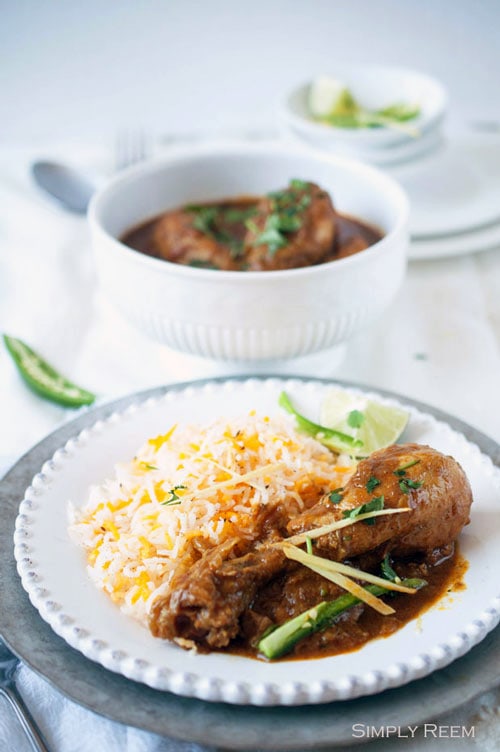
What To Serve With Indian Chicken Curry
For a wholesome meal and easy weeknight dinner, I recommend the following recipes.
I hope you enjoy this post as much as I do. If you try my recipe, please leave a comment and consider giving it a 5-star rating. For more easy and delicious recipes, explore my Recipe Index, and stay updated by subscribing to my newsletter and following me on Facebook, Pinterest, and Instagram for new updates.
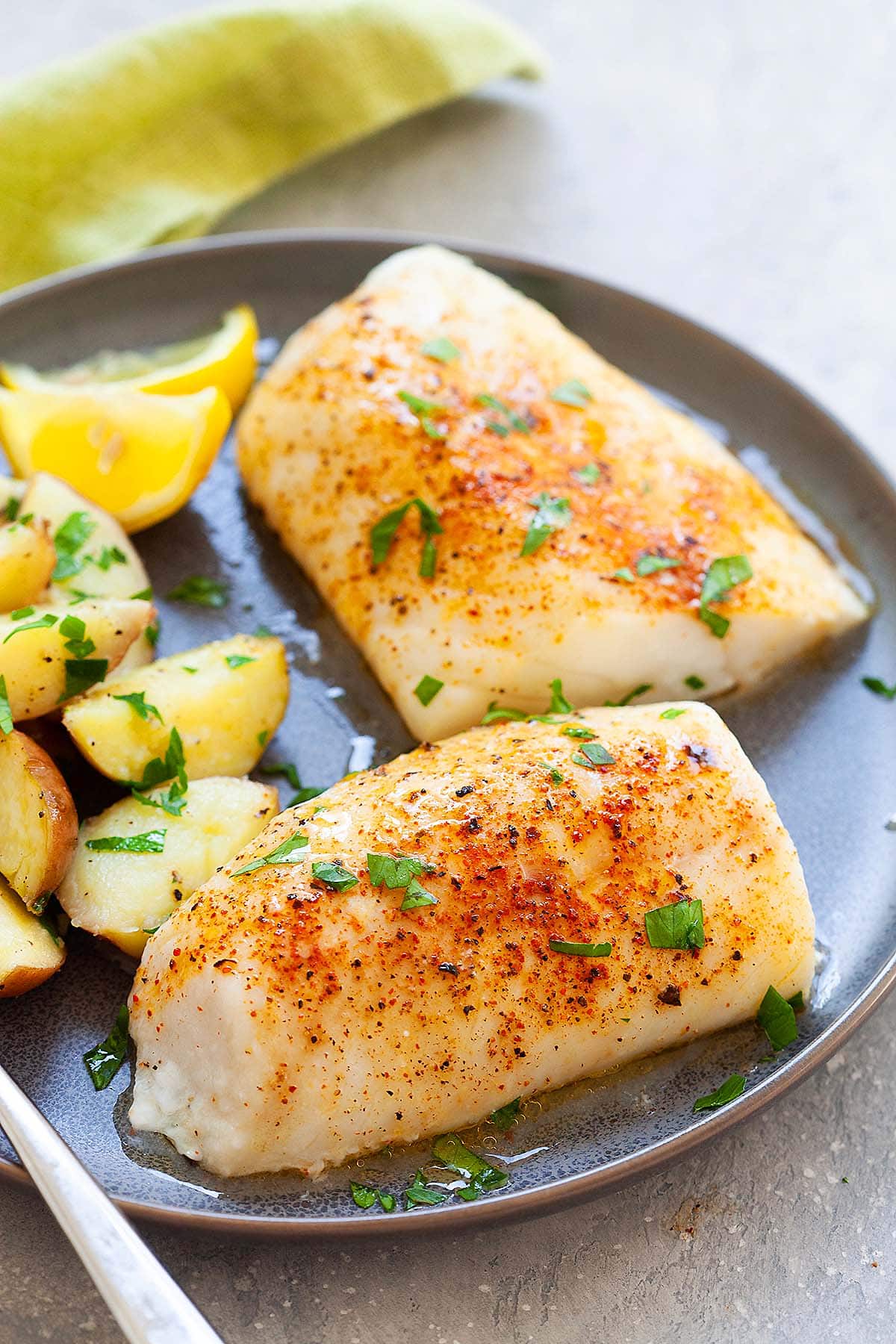
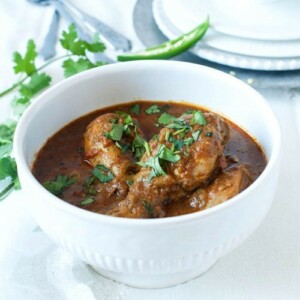
Indian Chicken Curry
Ingredients
Main Ingredients
- 3 pounds (1.5kg) whole chicken or chicken legs, cut into pieces
- 1 lime, cut into halves and extract for juice
- 5 tablespoons cooking oil
- 2-3 cups hot water, for cooking at different stages
- 1 teaspoon salt or to taste
- 2 large yellow onions, finely chopped
- 1 bay leaf
- 1 inch (2.5cm) cinnamon stick
- 1 tablespoon tomato paste
- 4 medium-sized tomatoes, cut into small pieces
- 1 – 1 ¼ cups hot water
- salt to taste
Wet Spice Pastes
- 2 tablespoons ginger paste
- 1 tablespoon garlic paste
- 1 teaspoon turmeric powder
- 1 tablespoon coriander powder
- 1 teaspoon paprika
- ¼ cup water
Garnishing
- ¼ cup chopped cilantro leaves
Instructions
- Preparing the Wet Spice Pastes: In a bowl, mix the ginger paste and garlic paste. In another bowl, combine the turmeric powder, coriander powder, and paprika with ¼ cup of water to create a spice paste.
- Preparing the Chicken: Wash the chicken thoroughly and remove any remaining internal organs if using a whole chicken. Cut the chicken into serving pieces and pat dry with paper towels. Transfer the chicken to a large non-reactive bowl (see Notes at the bottom of the recipe card). Add 1 tablespoon of ginger-garlic paste to the chicken, reserving the remaining paste for later use. Add the lime juice and mix well. Cover and let the chicken marinate in the refrigerator for 30 minutes.
- Cooking the Curry: Heat oil in a pot over medium heat. Add the onions, bay leaf, and cinnamon stick. Fry until golden brown, about 3 minutes. Add the remaining ginger-garlic paste and the turmeric wet spice paste, along with the tomato paste. Cook until the oil separates from the mixture, about 3 minutes, stirring continuously to prevent sticking and burning.
- Transfer the chicken pieces into the pot and stir continuously to coat them well with all the ingredients. Add the chopped tomatoes and 1 cup of hot water. Cover the pot and turn the heat to medium-low. Cook and simmer the chicken until it is tender and the curry sauce thickens, about 20–30 minutes, to your desired consistency. Add salt to taste.
- Ladle the Indian Chicken Curry into a large bowl, garnish with chopped cilantro, and serve immediately.
Notes
- You can make the ginger paste by grinding fresh and peeled ginger in a mini food processor. Add some water to make it into a thick paste.
- Similarly, you can make the garlic paste by grinding garlic cloves with some water water in a mini food processor.
- Both the ginger paste and garlic paste can be stored in a small container and chilled in the refrigerator.
- The terms “reactive” and “nonreactive” are referring to the type of metal from which your pot or bowl is made of. Aluminum, cast iron, and copper are all “reactive.” Stainless steel, ceramic, glass, and metal cookware with enamel coating are all “nonreactive.” This is to prevent discoloration as lime (acid) is used to marinate the chicken.
Nutrition
Nutrition information is automatically calculated, so should only be used as an approximation.
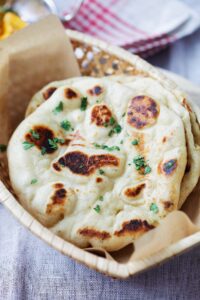
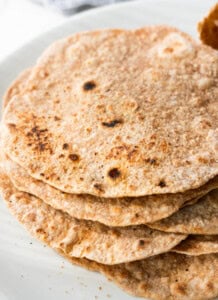
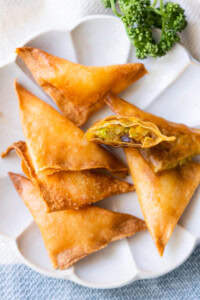
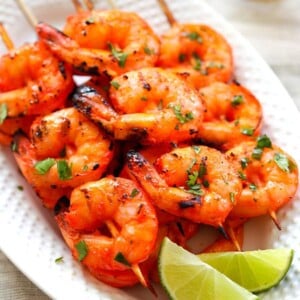






You don’t use Curry leaves? That was the aroma I remember the most from my childhood in KL.
I would if I could get them from where I live. You can certainly use them if available.
This sounds lovely. Going to give this a go. thanks for sharing this recipe.
Simon
I made this but there flavour is lacking as I felt the amount of spices are way too little for the curry!! At the end I topped up 5 tbsp of curry powder and everyone loves it!!
You are right Carol Lai. I added curry powder as you mentioned and the curry turned out really nice.